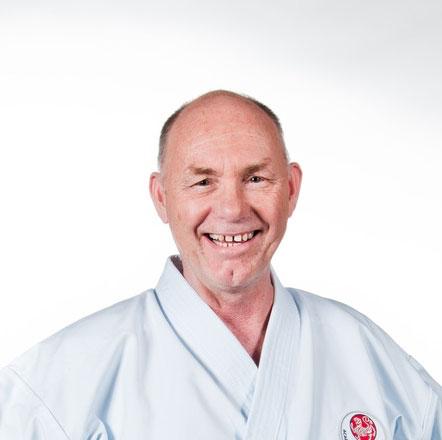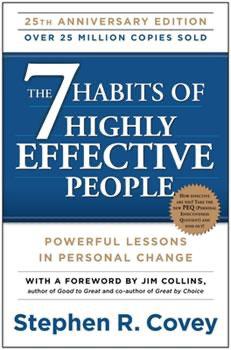
10 minute read
It will take all your life to learn karate
The mindset that will set up free
Marty Callahan
Advertisement
8th Degree Black Belt
“The basic difference between an ordinary man and a warrior is that a warrior takes everything as a challenge while an ordinary man takes everything as a blessing or a curse.”
-Carlos Castaneda
Niju Kun #9
This is the nineth of 20 precepts of Master Gichin Funakoshi, the Father of Modern-Day Karate. Master Funakoshi is known by millions of people all around the world and is considered to be one of the three most important martial art masters of the 20th century.
A lesson learned today is forgotten tomorrow, unless it is relearned tomorrow. It is human nature to forget. If you attend a lecture, you will remember only about 10% of what you hear. You have to experience things many times before you reach the point where you won't forget them, where they become automatic. For lessons to be truly understood they must be grasped by every cell in your body.
The potential lessons you can learn from karate are infinite. You could practice every day for the rest of your life and still not learn everything there is to learn. So, practice until every cell in your body absorbs the lesson you are working on, even if you feel like you've done it the best you could already. There is always, always, always... room for improvement.
We frequently say to do it 10,000 times. Do whatever you are attempting to learn 10,000 times. After this there will be no questions, you will have a complete understanding.
This is the concept of infinite. That you will go to infinite and beyond to learn what you need to learn and improve yourself as a result.
The person who will go to this extent is impossible to beat. His or her enemies might damage them in some way but can never stop them – even in death.
We just celebrated the Martin Luther King Jr. Holiday. I would say that he lived this way. Even in death he lives on. What he believed and what he stood for is still alive today.
This is how we must live. This mindset will set you free.
A summary of the bestselling book by
Stephen R. Covey.
From The Seven Habits of Highly Effective People by Stephen R. Covey. Published by Simon & Schuster.
Introduction
Our character, basically, is a composite of our habits. Because they are consistent, often unconscious patterns, habits constantly express our character and produce our effectiveness - or our in effectiveness. In the words of Aristotle, “We are what we repeatedly do. Excellence, then, is not an act, but a habit.”
I identify here seven habits shared by all truly effective people. Fortunately, for those of us not born effective (no one is), these habits can be learned. Furthermore, the collective experience of the ages shows us that acquiring them will give you the character to succeed.

Some years ago, I decided to read all the success literature published in the United States since its beginning in 1776 - hundreds of books, articles, and essays on self-improvement and popular psychology.
I noticed a startling thing: Almost all the writings that helped build our country in its first 150 years or so identified character as the foundation of success. The literature of what we might call “The Character Ethic” helped Americans cultivate integrity, humility, fidelity, temperance, courage, justice, patience, industry, and the Golden Rule. Benjamin Franklin’s autobiography is a prime example.
Compared with the early success literature, the writings of the last 50 years seem superficial to me - filled with social image consciousness, techniques, and quick fixes. There, the solutions derive not from the Character Ethic, but the Personality Ethic:
Success is a function of public image, of attitudes and behaviors, of skills that lubricate the process of human interaction. I don’t say these skills are unimportant. But they are secondary.
If there isn’t deep integrity and fundamental goodness behind what you do, the challenges of life will cause true motives to surface, and human relationship failure will replace short-term success. As Emerson once put it, “What you are shouts so loudly in my ears I cannot hear what you say.”
Changing our habits to improve what we are can be a painful process. It must be motivated by a higher purpose, and by the willingness to subordinate what you think you want now for what you know you want later.
As you open the gates of change to give yourself new habits, be patient with yourself This is not a quick fix. But I assure you that you will see immediate benefits. And if you see the whole picture clearly, you’ll have the perseverance to see the process to its conclusion. Have faith - it’s worth the effort. Remember what Thomas Paine said: “What we obtain too cheap, we esteem too lightly; ‘tis dearness only which gives everything its value. Heaven knows how to put a proper price upon its goods.”
Acquiring the seven habits of effectiveness takes us through the stages of character development. Habits 1 through 3 make up the “private victory”where we go from dependence to independence by taking responsibility for our own lives. Acquiring habits 4 through 6 is our “public victory”: Once independent, we learn to be interdependent, to succeed with other people. The seventh habit makes all the others possible - periodically renewing ourselves in mind body, and spirit.
Your instructor is the key to this training process. He or she will provide you with the inspiration, education, training, coaching, and support you’ll need. They have worked hard to get where they are and represent the highest values of martial arts training. They will show you how to succeed. The lessons you learn will stay with you your whole life. Your instructor is committed to training you and in return you must commit yourself to practicing what you learn. Your relationship with him or her is important, so pay attention to what they tell you. Always address your instructor as ‘Sensei.' This term is one of respect. The literal meaning of sensei is “one who has gone before,” implying that your teacher has already succeeded at what you are about to attempt and can show you the proper way to do it. This prevents you from repeating the mistakes others have made in the past. Mistakes are an important part of learning and you’ll make plenty of your own, but learning from the mistakes of others is very important. Say hello and goodbye to your instructor, both when you come to class and when you leave. This shows respect and teaches you to communicate with people who hold positions above you in life.
Junior Instructor: A Junior Instructor is a youth under the age of 16 holding a minimum rank of 1st Degree Black Belt and is qualified to teach all levels. He/she reports to the Head Instructor, wears the Instructor Patch on their left shoulder and a Junior Instructor patch under the school patch.
Instructor: An Instructor is an adult over the age of 16 holding a minimum rank of 1st Degree Black Belt and is qualified to teach all levels. He/she reports to the Head Instructor wears the Instructor Patch on their left shoulder and an Instructor patch under the school patch on their left breast.
Senior Instructor: A Senior Instructor is an adult holding a minimum rank of 2nd Degree Black Belt and is qualified to teach all levels. He/she reports to the Head Instructor wears the Instructor Patch on their left shoulder and a Senior Instructor patch under the school patch on their left breast. There many be several Senior Instructors.
Junior Instructors, Instructors and Senior Instructors are members of the School Board of Review and the Instructional Board. They line up slightly back and to the right of the Chief or Head Instructor. All instructors wear 2 red chevrons on their left shoulder under their instructor patch.
Head Instructor: The Head Instructor is an adult holding a minimum rank of 2nd Degree Black Belt and is qualified to oversee all Instructors. The Head Instructor reports to the Chief Instructor.
The Head Instructor is a member of the School Board of Review, the Instructional Board, the Board of Examiners, and is an Adviser to the Student Leadership Council. When lining up, the Head Instructor stand slightly back and to the right of the Chief Instructor. He or she wears a Head Instructor bar above the School Patch on the left breast and 2 red chevrons on their left shoulder under their instructor patch. There is only one Head Instructor.
Chief Instructor: The Chief Instructor is qualified to oversee the instructional program. This position is for an adult who holds a minimum rank of 3rd Degree Black Belt and reports to the School Director. There is only one Chief Instructor.
The Chief Instructor’s role is to chair the School Board of Review, the Instructional Board and the Board of Examiners. He or she lines up front and center on the training floor and wears the Chief Instructor bar below the school patch on the left breast and 2 red chevrons on their left shoulder under their instructor patch.

Every life science has a set of core assumptions it operates out of. The core assumptions of CBT are based on the assumption that the quality of our thoughts impact how we relate to our life’s experiences. This means that the attitude and approach we take towards life, relationships and people will influence the outcomes we experience throughout life.
9. OUR INTERNAL WORLD MANIFESTS ITSELF IN OUR OUTSIDE WORLD
Thought power is the key to creating our reality. Everything we perceive in the physical world has its origins in the invisible, inner world of our thoughts and beliefs. To become the master of your own destiny, we must first learn to control the nature of our habitual negative thinking patterns. In doing this, we begin to attract into our lives more of the things we actually want as we come to recognize this truth: our thoughts create our reality.
For every ‘outside effect’ there is an ‘inner cause’: every effect we see in our outside world has a specific cause which originated in our inner or mental world. This is the very nature of thought power. In other words, the circumstances and conditions of our lives are a result of our collective thoughts and beliefs. Every aspect of our lives, from the state of our health to the state of our finances and our relationships, reveals our thoughts and beliefs.
It’s an ‘inside job’: most people get it back to front and believe that they think or feel a certain way as a result of their external circumstances. They do not know the truth that it is their thoughts which are creating these very circumstances (whether desired or not). By internalizing and applying the truth that our thoughts create our reality, we can go on to create the changes that we want to see and begin working towards achieving our life goals. Reality is an inside job.
Q. If you were to accept that this assumption was true, how might your attitude towards life and other people change?
10. HURT PEOPLE HURT PEOPLE
Do you know any difficult people in your life? Individuals who are easily offended by words? You have to watch everything you say around them through fear that you’ll set off a trigger in them that leads them to lash out in anger. Or perhaps this person is you. Do other people walk on eggshells around you? Do they avoid you? Do they hold back for fear of how you will react?
If you don’t deal with your own hurts, you end up hurting others. When you don’t forgive other people, you hurt. When you don’t forgive yourself, you hurt. This is true on a physical, emotional, relational, and spiritual level.
Here are ten indicators of hurt people who hurt others:
1. They are easily threatened so are quick to attack with their words.
2. They misjudge others and often assume other people are against them.
3. They don’t see or understand the pain they inflict on other people.
4. They don’t understand why others don’t understand them.
5. They won’t let down their guard, so they are always on the defensive.
6. They don’t take responsibility for their behavior.
7. They are easily offended.
8. They are quick to react in anger.
9. If they feel backed into a corner regarding an issue, they’ll come out fighting.
10. They rarely have close, intimate friendships.
It’s very difficult to help a hurting person unless they want your help. If you are the one that is hurting, recognize that your pain is causing other people pain and get help for yourself and the people around you. It really does matter.
Here are some common traits hurt people display when they’re interacting with other people.
• Hurt people usually transfer their inner anger onto their family and close friends. Often, the people around them become the recipients of fits of rage and harsh tones because they have unknowingly become the recipients of ‘transferred rage’.
• Hurt people interpret every word that is spoken to them through the prism of their pain. This means that words are often misinterpreted to mean something negative towards them. As a result, they are extremely sensitive and respond out of pain, as supposed to reality.
• Hurt people tend to interpret every action through the prism of their pain. They often jump to incorrect conclusions about other people’s motives or evil intent behind their actions towards them.
• Hurt people often have a ‘victim mentality’ where they believe that they are ‘victim’ to the circumstances and situations life throws their way.
• Hurt people often find it very difficult entering into a trusting relationship.
• Hurt people often carry around a suspicious spirit.
• Hurt people often alienate other people and wonder why there is no one there for them. They are often so focused on their own hurt that they disregard and disrespect others without even realizing it. They continually hurt the people they love and need the most as a result of their selfdestructive behaviors.
• Hurt people are often depressed or frustrated because they allow past pain to continually spill over into their present. Much of the time they are not even aware of why they are always depressed or frustrated because they have coped with the pain by compartmentalizing it.
Q. If you were to accept that this assumption was true, how might your attitude towards life and other people change?




